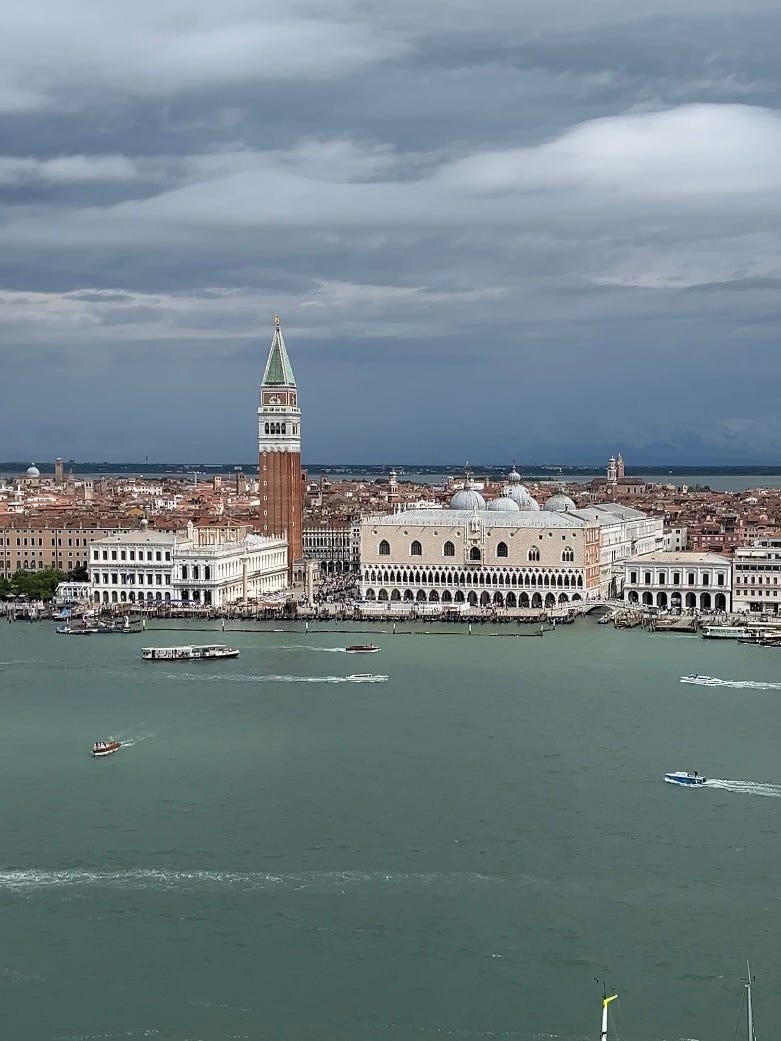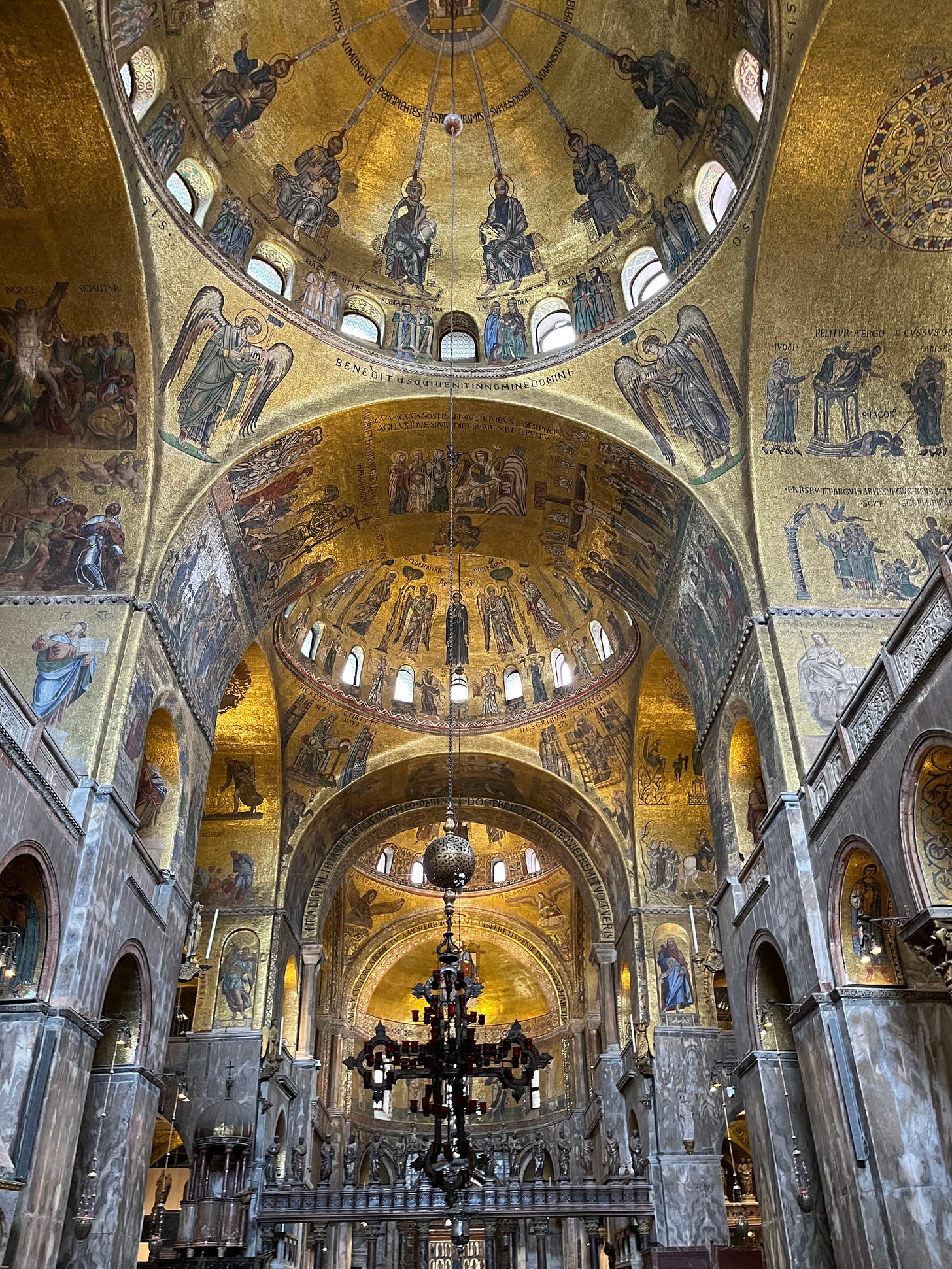Notes from the Campo
‘Campo’ is what a town square is called in Venice, but its literal meaning is field! So notes from the field, but Venetian style. You get it. ;)
In the blink of an eye, the first week of my summer course has come and gone (well, and the second, but more on that soon)! I can’t believe how the time is flying. We began the course with a bird’s eye view over the city of Venice – or as close as we could reasonably get to that! – by ascending to the top of the bell tower of the church of San Giorgio Maggiore, located just across the water from the Piazza San Marco. From high above, the lay of the land – and the water, of course – is more apparent. We discussed the history of the settlements in the lagoon, the development of the urban center of Venice, and the Venetian sense of self, shaped by a deep sentiment of divine favor that reflects what has come to be referred to as ‘the myth of Venice.’ It was also surprisingly and delicious cool this morning (I was even wearing a light sweater, most unexpectedly!) – after a morning drizzle, we were met with overcast skies, a crisp breeze, and a partially clear view of the Dolomites lining the distant horizon to the north.
We also enjoyed a long ride on the vaporetto (the water bus) to Torcello, a lush, green island in the northern lagoon which is home to the earliest church in Venice, founded in the seventh century and then expanded and clad in marble and mosaics in the eleventh and twelfth centuries. Today a handful of restaurants line the main path that leads to the cathedral, but beyond that, the vast majority of the island consists of fields and farmland. It is hard to imagine that this seemingly sleepy town, whose population is today 13, was once a bustling settlement with some 20,000 inhabitants! The highlight of this visit for me was our discussion in front of the mosaics that decorate the counter facade (no photos allowed inside, alas), depicting the Last Judgment – truly a spectacle to behold.

The next essential spot on our itinerary for this week was of course the Basilica of San Marco. Here we discussed the arrival of the body of St. Mark in Venice in the year 828, when it was smuggled out of Alexandria by two Venetian merchants; after this, he was named the new patron saint of Venice, and various legends associated with him were recorded in later chronicles. This ‘holy theft’ was followed by another of far greater proportions in 1204, when the Venetians sacked Constantinople during the Fourth Crusade, bringing back with them marble elements, icons, and more, that they would then use to adorn and enrich their Basilica. I have by this point walked through its doors so many times that I have lost count, and yet it is never less than awe-inspiring. From the richly inlaid pavements, to the slabs of marble revetment and carved icons that line the walls, to the glittering mosaics that cover the entire expanse of the upper walls, the vaulting, and the domes, it is all just dazzling.

It was such a joy to share these beautiful places that are so dear to me with my students – and so many more in the following week! But I will save those for another post. Thank you, dear readers, for following along!
More to come soon, and cari saluti,
Sophia






Your pictures and descriptions are wonderful!! I am making my first trip to Venice in September and hoping to replicate your footsteps. This is a very helpful guide. Thank you!
Incredible pictures and delicious descriptions. Your passion for what you are doing really shows. I do miss seeing your beautiful face in person but am so happy for you being in that wonderful place doing what you love. Honeydew and Marz say Meow!!